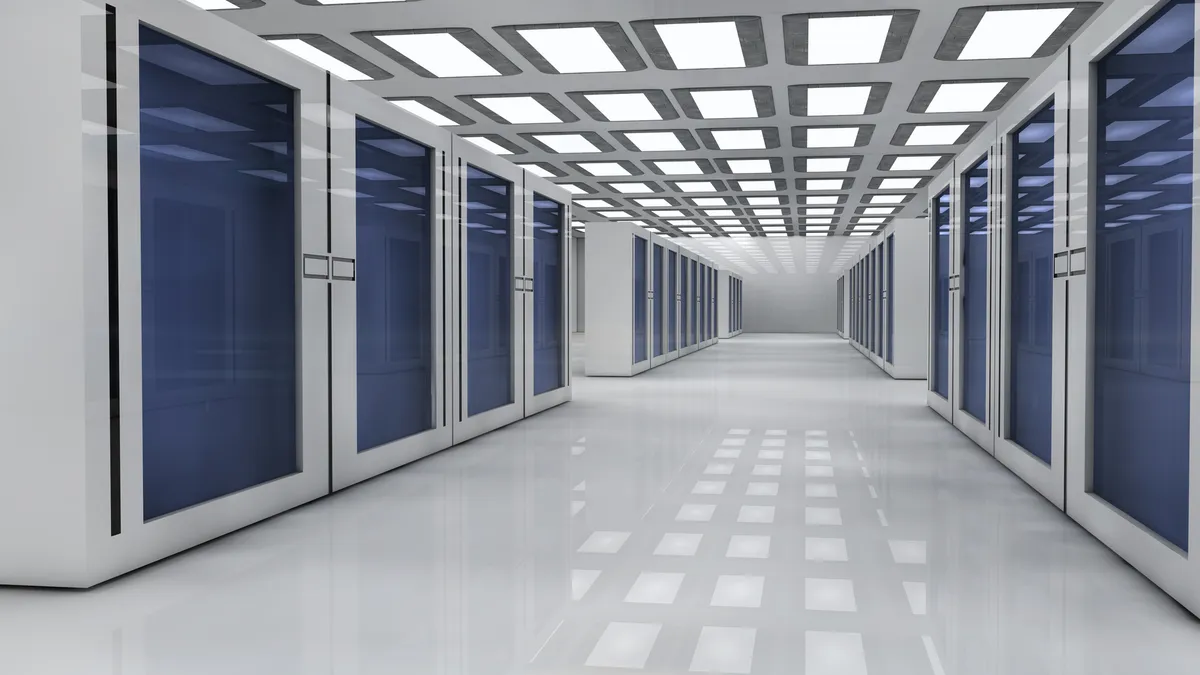Thanks to a data center somewhere, you can share photos, download music and read this article. As our work and home lives depend more and more on the Internet, Utility Dive is looking at data centers' energy use and what it means for electric utilities.
Data centers today are using more and more power, albeit at about half the pace the Environmental Protection Agency estimated in 2007. Data centers accounted for 1.7% to 2.2% of all electricity used in the U.S. in 2010, according to a report by Jonathan Koomey, a Stanford University professor who focuses on climate change and information technology issues.
One thing to keep in mind: Not all data centers are the same. Koomey breaks down data centers into four main types. Public cloud computing providers, which are highly efficient. Think Amazon, Google and Facebook. Then there are scientific computing centers and co-location facilities that house servers for other companies to use. Finally, there are on-site data centers, which represent the largest segment in terms of electric use. These are also the least efficient energy users.
Data center energy use grows
While data center operators are highly focused on running their facilities as efficiently as possible, data center power use is growing. Facebook, which has its own data centers and rents space from other providers, used 678,000 MWh in 2012, up from 509,000 MWh the year before, according to the company's most recent energy use report.
Taking a look at one region, data center load growth in the Northwest is growing faster than expected, according to the Northwest Power & Conservation Council (NPCC), a regional power planning organization. Last year, the region had about 550 MW of data center load, up from an earlier estimate of around 350 MW, according to an August presentation. The estimate does not included smaller in-house data centers.
About a year and a half ago, NPCC said it expected large and mid-sized data center load to grow at about a 3% annual rate to 350 MW to 550 MW by 2020 and then to 1,400 MW by 2030. Load growth is clearly racing ahead of that estimate.
The average peak capacity of six data centers that shared information with NPCC has increased to 61 MW from 25 MW in 2008, according to the planning group, which covers Idaho, Montana, Oregon and Washington. Annual usage at the facilities jumped to 446,760 MWh from 131,400 MWh five years ago.
Overall data center loads are growing, but increases in demand will be tempered by the industry's sharp focus on energy efficiency. The largest segment of the sector – the in-house data centers – are generally the least efficient energy users so there is room for significant energy savings there. Outdoor gear and clothing retailer REI, for example, made changes at its in-house data center that it expects to save 2,200 MWh a year.
An increasing focus on sustainability
Large data center companies are increasingly focused on sustainability. Facebook, for example, got 19% of its power supply from renewable resources in 2012 and aims to get 25% from renewable sources by 2015.
The large companies are taking different paths in their sustainability efforts, in some cases avoiding their incumbent utilities and in others embracing them. In an effort to be 100% renewable, Google has committed more than $1 billion to renewable projects and large-scale power purchase agreements totaling more than 2,000 MW. Apple, which says its data centers use only renewable energy, has built its own solar and fuel cell facilities and is looking to partner with utilities on others. File-sharing company Box last year committed to being 100% renewable at its data centers.
These efforts point to opportunities utilities have in offering renewable products for data center customers.
Data centers and demand response
One area that could become increasingly important: Data centers could provide ancillary services by increasing or decreasing their load for balancing the grid or by rapidly moving load between facilities to deal with congestion. Facebook, for example, has a facility in Oregon that can shed 3 MW by redirecting traffic to a different facility, according to NPCC.
Large data centers also have backup generation that could potentially help with integrating renewables.
Pacific Gas & Electric, which has about 500 MW of data center load, has been studying ways that data centers could help lower peak load during critical times. Early results found that data centers could realistically cut their peak load by 10%.
In the coming years, expect to see data center operators continue to try to make their facilities more efficient while using more renewable power. One of the big questions will be how utilities respond to the needs of these major power users.





















